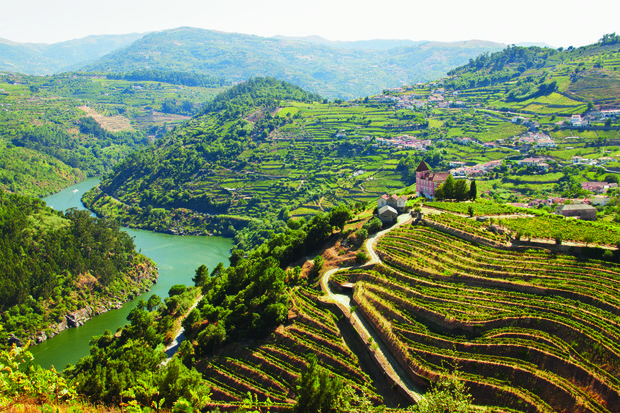
White wines of the Douro: Emerging from fortified's shadow
Famous for its Port fortified wines, far less is understood about the Douro's long history of white winemaking.
Famous for its Port fortified wines, far less is understood about the Douro's long history of white winemaking.
There is however, an upward trend towards white winemaking in the Douro at the moment, with producers putting more focus into the main white varieties: Gouveio, Malvasia Fina, Moscatel, Rabigato, Viosinho and Arinto.
According to the Instotuto de Vinho do Douro e Porto (VDP), white production increased from 16.67% of total table wines in 2011, to 20.14% in 2015.
Sales of white wines in the region have increased from 17.68% to 21.28% of table (non-fortified) wines in the same period.
Of course, 76% of sales from the region are still Port, and red wine just more than doubles that of white.
So where has this increased interest in white wines come from?
Sandra Tavares Da Silva, of Wine and Soul Winery, based in the Cima Corgo, shed some light on this at a discussion on white wine production in the Douro, at the Vinyl Factory in London's Soho yesterday morning.
Tavares Da Silva, with fellow winemaker and partner Jorge Serôdeo Borgo, began in 2003 with port, and in 2004 they produced their first Guru White from 54-year-old vines, grown at high altitudes.
Tavares Da Silva's goal is to "create wines that express all the character of the traditional vineyards and varieties from Douro Valley. Balanced wines of concentration, complexity and elegance".
They seem to have succeeded.
Their 2015 Guru Douro White (£27.95) is made from grapes grown at 600-700m above sea level and on North-facing slopes to preserve acidity and freshness, resulting in a wine which is capable of longevity, with steely citrus, elegant body and texture, citrus and stone fruit.
There is also a real focus on terroir and traditional wine making methods, with some argument between winemakers about wild or cultivated yeasts.
Minerality was also a hot topic - that elusive quality that has only emerged in popular wine literature in the past 15 years or so.
It's clear that minerality means different things to different people.
Some describe it as a "steely" quality like Chablis; others, such as Douro winemaker Dirk Van Der Niepourt, describes it as a "soapy" or "salty" character.
Niepourt feels the importance of emphasising terroir, rather than more generic, fruity wines produced by modern winemaking techniques.
He also discussed his preference for natural, rather than cultural yeasts, preferring a "dirty", natural wine that still reflects the terroir, to a fruity, crafted wine from cultivated yeasts that is clean.
Emerging out of the shadow cast by Port and reds isn't without its challenges however.
Many at yesterday's discussion spoke of the difficulties in marketing the Douro white wines as the difficult pronunciation of the grapes often puts off consumers from purchasing them.
The current trend in sales however, shows that many consumers are looking for something exotic and new, rather than the Chardonnay and Sauvignon Blanc they are used to - good news for Portuguese winemakers.
Keywords:
- wine
- News
- European Wine News
- Wines by type
- Fortified wines
- Sectors
- Portugal
- White wines
- HWS - Jo Gilbert
- Jennifer Franich





